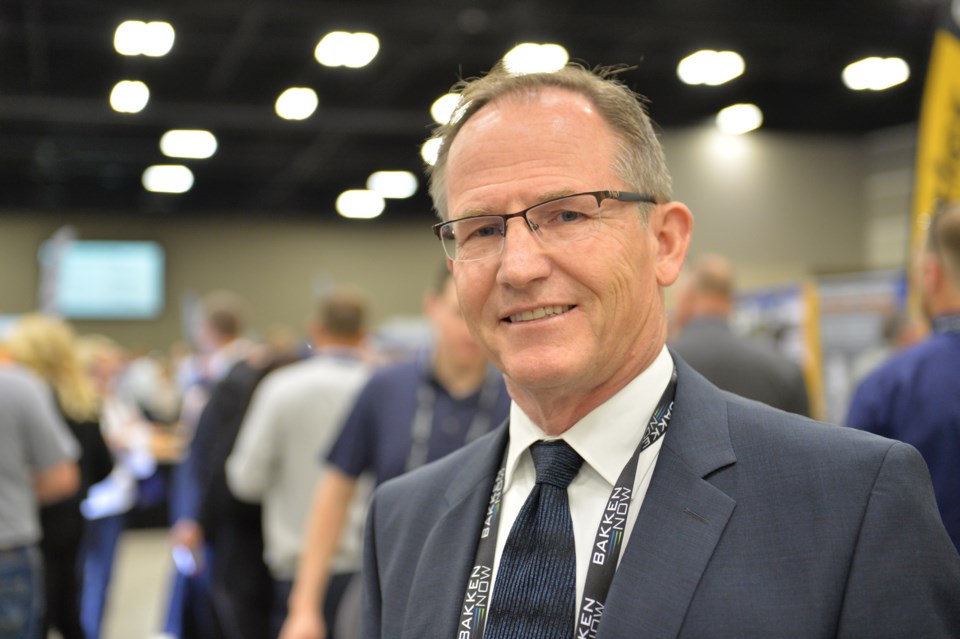Bismarck, N.D. – With North Dakota starting to seriously talk about using carbon dioxide for enhanced oil recovery that plays right into the expertise of the Regina-based Petroleum Technology Research Centre (PTRC).
Dan MacLean, president and CEO of the PTRC, was at the Williston Basin Petroleum Conference in Bismarck, N.D., giving a presentation on May 23 regarding the 20th anniversary this year of the organization. However, he was there to talk about the future, not just the past.
Asked what he was seeking to accomplish, MacLean said, “Number one, have an opportunity to talk to people about Saskatchewan as a place to do business. Number two is to try to get some insight in some new things that are going on, here in North Dakota, that may have application in Saskatchewan. I did go and listen to a couple of talks on pipeline integrity, which is something we’ve been asked to give some consideration to, from a research standpoint, in Saskatchewan. There may be some things we can take away. I’m sure we’ll have some further conversations with our North Dakota colleagues at the Energy and Environmental Research Centre (EERC) on that front.”
MacLean mentioned other enhanced oil recovery things that might have some application in Saskatchewan. There were presentations at the show about using carbon dioxide for enhanced oil recovery in the Bakken.
“That’s something we’ve been trying to promote for a long time, that CO2 is an important and viable element of enhanced oil recovery. It’s safe and it results in a greener hydrocarbon,” MacLean said.
When it came to the Weyburn-Midale greenhouse gas project, the PTRC quite literally wrote the book on CO2 usage in enhanced oil recovery and its geological storage.
North Dakota Governor Doug Burgum spoke at the conference specifically about using carbon dioxide from the state’s several lignite coal power plants for enhanced oil recovery. Asked about his thoughts on that, MacLean said, “We talk to SaskPower regularly. They are looking for new markets for CO2. We are trying to facilitate that through conversations with other oil and gas producers, encouraging them to do field trials of CO2 in their areas. Obviously, there’s a big opportunity in the Viewfield area, in the Bakken there. The challenge is you’ve got to get the CO2 there, and you’ve got to get the volumes required. Well, SaskPower is just lining out their CO2 capture facility. They’re at about 60, 65 per cent of its nameplate capacity. If they get up to 80 per cent, they’ll have some excess capacity. Then they’ll be able to seriously supply any new project.”
“So that’s the chicken and the egg. You’ve got to have that capacity. What the governor is talking about here is if we can get to a place where North Dakota has got a lot of CO2 projects, they’ll be looking for sources of CO2. At the moment, SaskPower is not a source for export to North Dakota.”
MacLean noted Beulah, North Dakota, currently supplies CO2 for Weyburn-Midale.
The EERC (a research organization similar to PTRC and located at University of North Dakota’s campus)  has been a part of the PTRC’s consortiums, learning on the CO2 storage side and providing input and collaboration.




